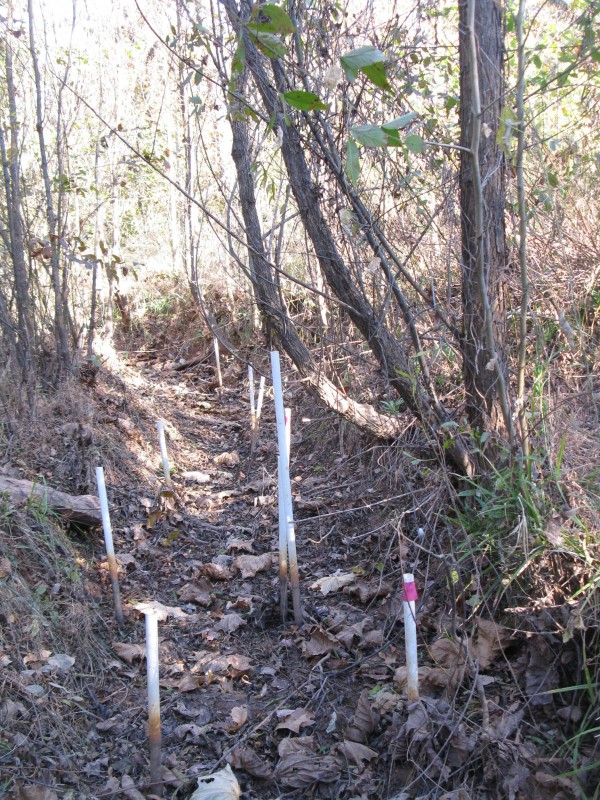The wrong conditions for a stream tracer injection
Cross-posted at Highly Allochthonous
Leaving behind Ohio and the high waters from Sandy, I ventured south in early November for the Geological Society of America meeting in my former home of Charlotte, North Carolina. The meeting was busy and wonderful, and far too packed for me to hear as much science or talk to as many people as I would have wished. After the meeting was over, I stuck around Charlotte for a few days in order to do some field work with one of my graduate students. Our plan was to do a tracer injection in one of the headwater streams that form her field area. Such tracer injections are a bit finicky to schedule…if it’s raining or has recently rained, you can’t do them because the stream discharge won’t be steady over the several hours of the experiment. But Sandy had not dropped any rain on the Charlotte area and the weather was beautiful all during the conference. Nonetheless, my student assured me that there would be plenty of water in the stream, as it had been running well just two weeks prior. Perfect conditions, we thought.
So the afternoon before the experiment, we headed out to the study site to measure discharge and mark the places where we would be collecting samples. My student advised me to wear my hip waders, not knee boots, as she had over topped her boots last time she was in the field.
But…it turns we didn’t need the boots. At all.
Clearly, we could not add our tracer to the streamflow the next day. We were missing one crucial ingredient: streamflow.
One upside to the situation is that it was a very easy call to make. No hemming and hawing and making some sort of judgement about whether things were “good enough” to go for it. We simply couldn’t do the experiment.
It was also stunningly good conditions for walking the channel and looking at the location and conditions of the stream restoration structures and wood jams. And we spent the next day with our heads together working on much more solid plans for the eventual experiment. So, not a total loss.
But now we need to wait, for the right hydrological conditions, suitable ecology, and a time that works in our schedules. Field work is incredibly important for learning about the way that real, complex hydrologic systems work. And it can be incredibly fun. But it can also be filled with frustration…and waiting. In this case, for the “right conditions for a stream tracer injection.”

